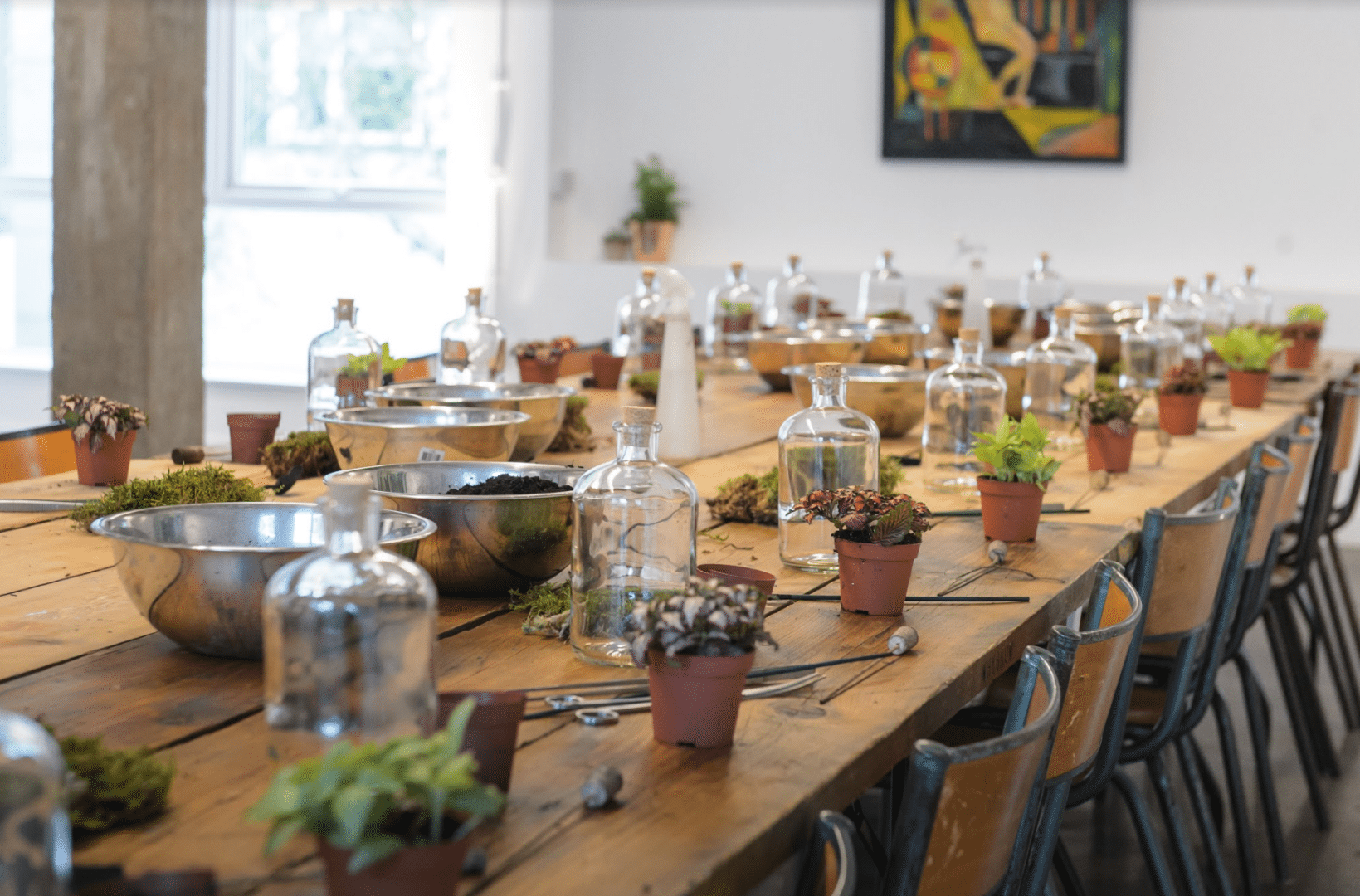
Genius in a Bottle: The London Terrariums Story
Nowadays, everyone’s into plants. You can’t be a true millennial unless your Hackney Wick flat is filled with wall-to-wall greenery, which kind of makes Emma Sibley of London Terrariums a trend setting genius, right? Well yes, but it turns out she tapped into this obsession quite accidentally…
If you don’t know what a terrarium is yet – where have you been? – it’s basically the perfect answer to gardening for a generation of ultra-busy, nitro-brew-drinking tech entrepreneurs who have trouble taking care of anything much besides themselves (and even that can be a struggle sometimes…). Put simply, terrariums – or terraria, for all your Latin purists – are tiny, self-sustaining ecosystems planted inside glass jars that sit on a shelf looking pretty with next to no maintenance required. And, unsurprisingly, they’ve completely taken off in recent years.
London Terrariums’ workshops at Carousel are constant sell-outs and see people getting down and dirty with a pair of tweezers, a glass jar, a sprinkling of activated charcoal and lots and lots of plants.
We caught up with Emma to find out where it all went right…
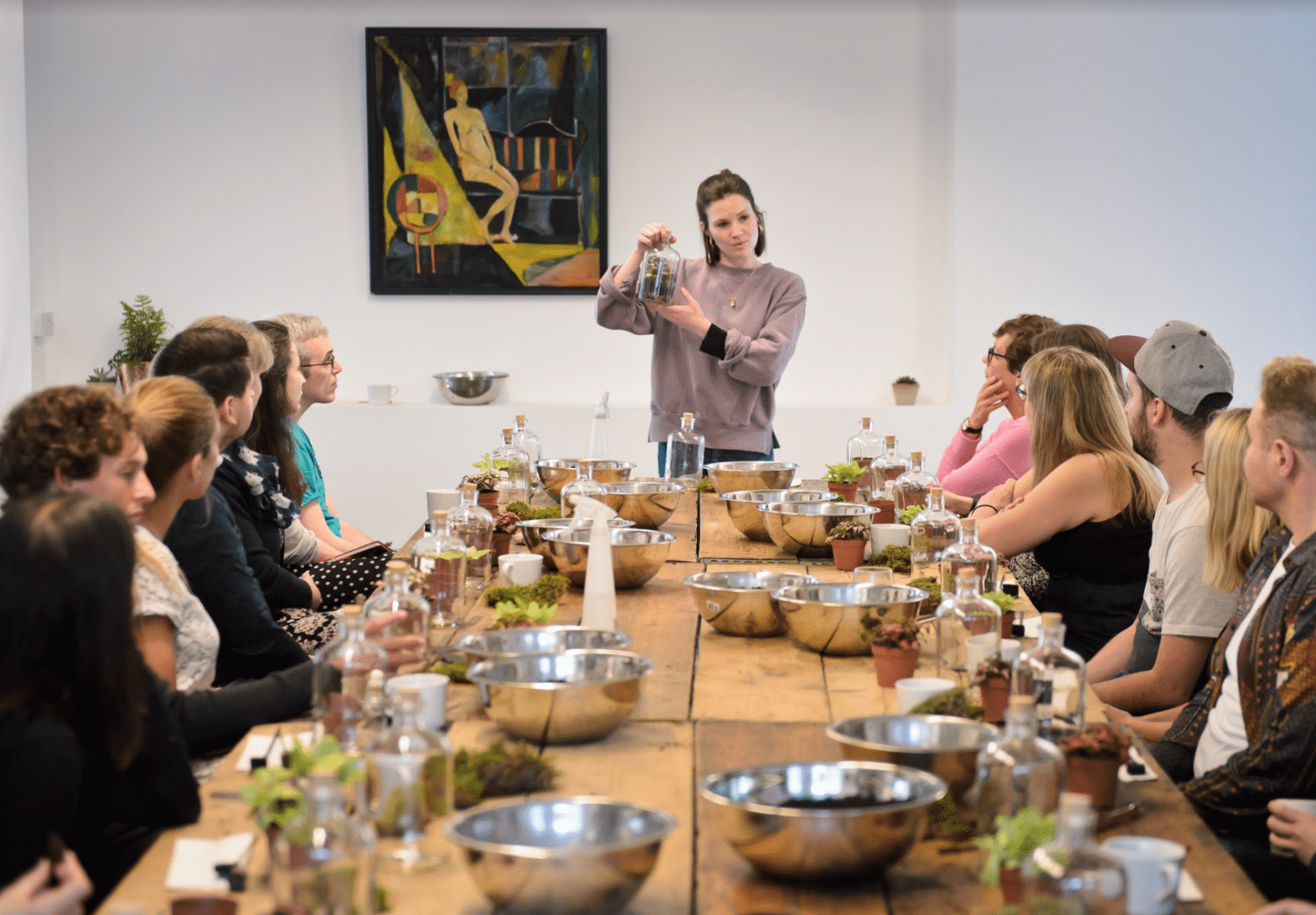
How did this all begin?
I’ve always been interested in plants. My mum recently found an old photo of me making miniature gardens out of seed trays, so I guess I started young! But London Terrariums really just began as a hobby.
One Saturday afternoon a few friends and I started making bottle gardens without really knowing what we were doing. I found it so addictive and relaxing that soon I was making them for friends and family, and before long I was asked to hold a workshop. That’s when I had to start learning about the history and science behind terrariums.
Up until that point I’d been working at Heal’s on Tottenham Court Road, in their e-commerce department. After a while I found myself driving to the flower market at five in the morning, driving onto work, smuggling trays of moss under my desk and then driving on to a workshop in the evening! It was definitely too much.
I am completely self-taught and have learnt everything about terrariums from books and old articles online. Terrariums date back to Victorian times so there is a lot of old literature on them. I have also been on a few short courses at The Chelsea Physic Garden and visited the library at The South London Botanical Institute quite a lot. It’s great there.
At what point did your hobby evolve into a business?
I think when I was starting to do a workshop a week and making terrariums well into the evening after work to keep up with the demand that I started to think that this could actually be a sustainable business. About two years ago I decided to leave my job at Heal’s and it was this point that it HAD to work as a business!
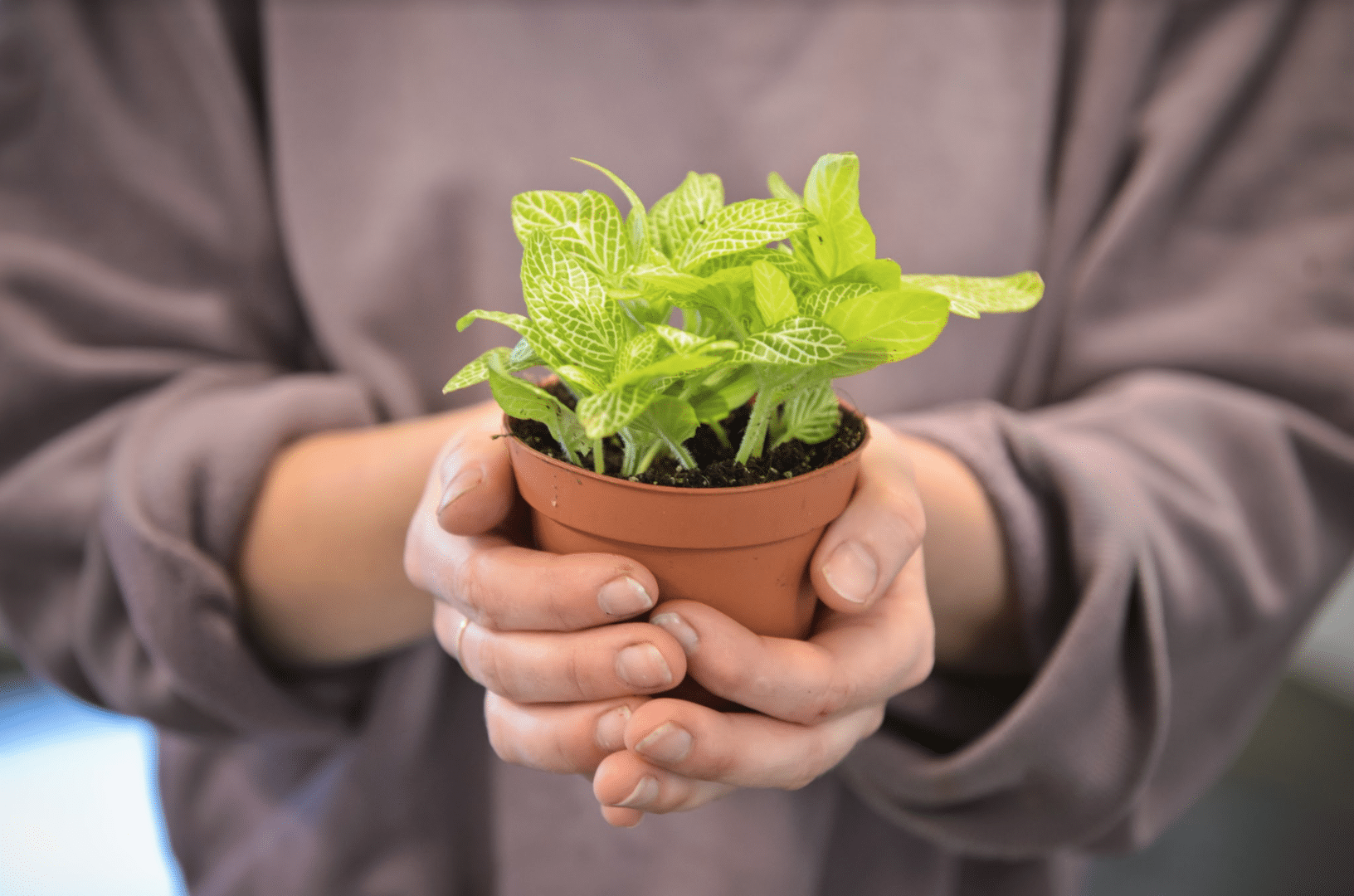
Were there any initial challenges when you started up London Terrariums?
When I initially started London Terrariums there were two of us. The main challenge was going from two people to one just a year into the business. My business partner had concentrated on the design and finance side of LT so immediately I then had to pick all of that up and that was very daunting!
Becoming a shopkeeper, as well as everything else, has also come with a whole new bunch of challenges: keeping up with having stock and keeping it looking lovely and like a shop rather than a messy, mossy studio covered in boxes. I find myself constantly apologising for the mess to people when they visit, which I need to stop doing as I think if I were a visitor I would actually love seeing where the magic happens!
How did people respond and why do you think it’s become so popular?
I think when we started out we were definitely the only terrarium business in London. The workshop boom also hadn’t erupted yet as it has now, so without even knowing it we were starting at exactly the right time. As we started LT we were on the cusp of the millennial houseplant / green living trend and so there was a whole group of people very eager to learn something new, get their fingers green and do something after work other than just going to the pub – that’s why the workshops are still so popular I think.
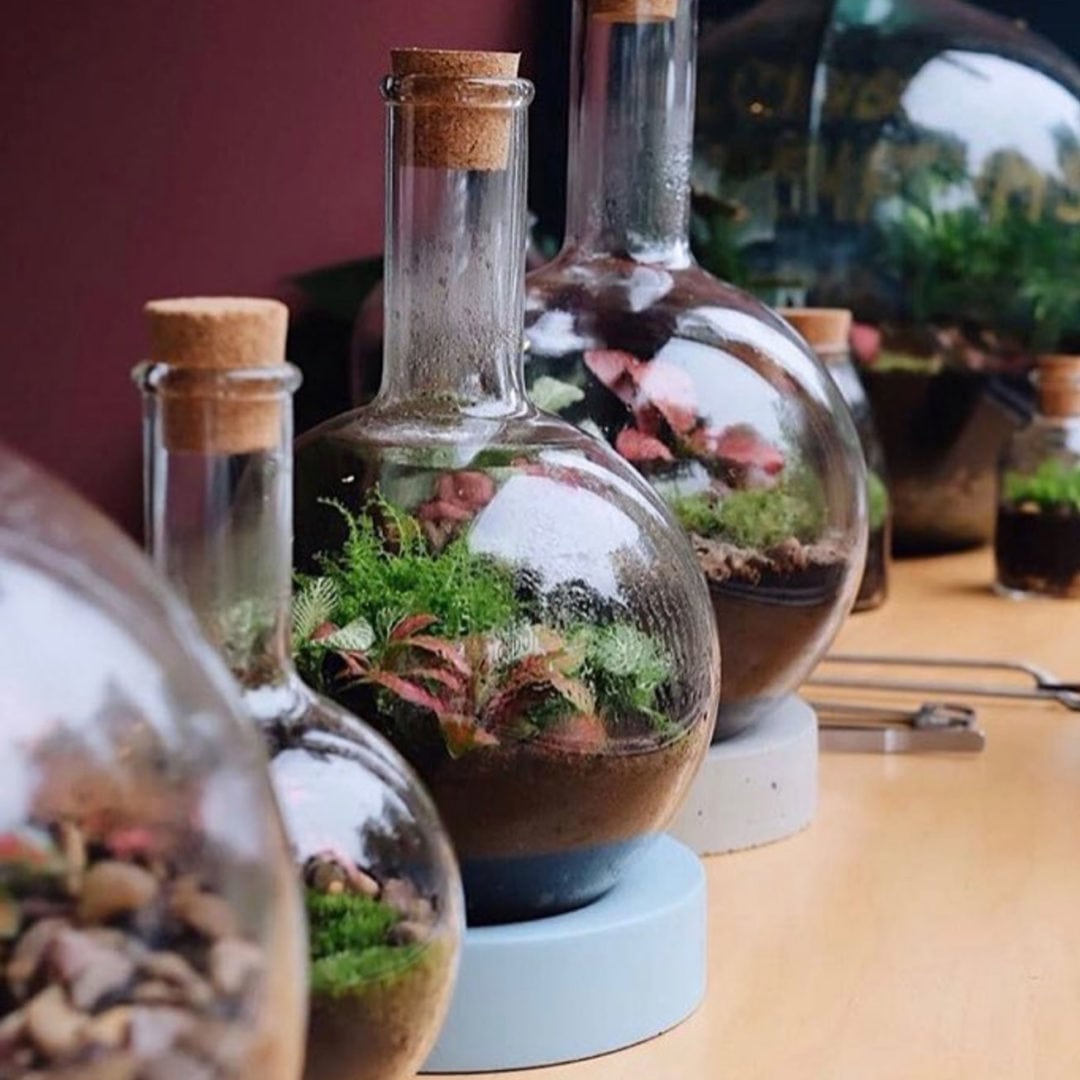
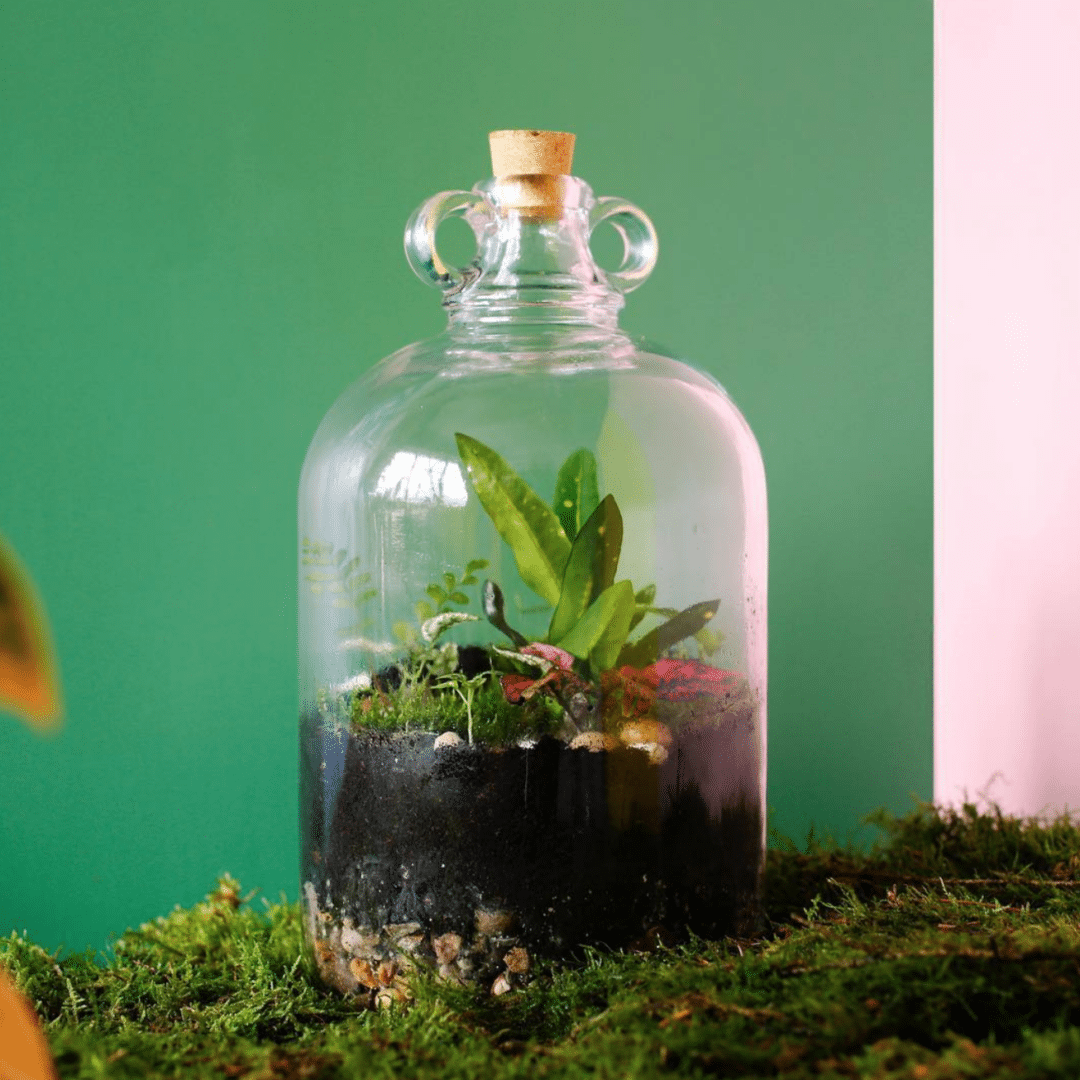
Tell us about the history of terrariums…
Terrariums were invented during the Victorian times by Nathanial Bagshaw-Ward who accidentally figured out that sealed glass containers were the perfect environment for many plants to thrive. This was the era of the Victorian plant hunters so people were travelling for years on end from Europe over to, say, Australia and they were in need of a way of transporting these plants and keeping them alive. This is when the Wardian Case (an early type of terrarium) was invented.
People also had these Wardian cases full of elaborate, exotic plants in their homes as it was a bit of a social status symbol. After this it really died down until the 1970s and I get a lot of people coming to my workshops who remember growing up with a Carboy terrarium in the corner of their room (a Carboy is a big glass vessel originally used for storing wine but absolutely perfect for making terrariums in). This is just a very condensed version of the history. You will have to come to a workshop to hear it all!
How exactly do they work?
They stay alive for so long through the plants photosynthesising and producing heat and oxygen, which condenses on the inside of the glass. This, in turn, waters the plants and keeps them alive. All of our terrariums use tropical plants and ferns that favour a high humidity but one thing to remember is that they have to stay out of any direct sun or heat as this will just cook the plants – we have had a few fatalities this way.
Overwatering them is also something to be aware of. There’s no need to water your terrariums unless they look really dry and then at this point you just spray them with a spray bottle. Because they’re so low maintenance, they’re perfect for anybody with a hectic lifestyle who doesn’t have a garden but wants some greenery in their life.
Where do you source all of the materials?
We have different shapes and sizes of vessels – Minijohn, Tinyjohn, Bigjohn, Demijohn, Boiling Flask (my personal favourite) and the Carboy – which we source from different places. The smaller bottles are bought wholesale and the Boiling Flasks we get from an actual laboratory supplier. The Carboys are a little trickier. We have to get those off Ebay or Gumtree and we also have our friends and family searching the antiques markets and charity shops for them!
The plants and moss are from New Covent Garden Flower Market in Battersea where the choice is endless.
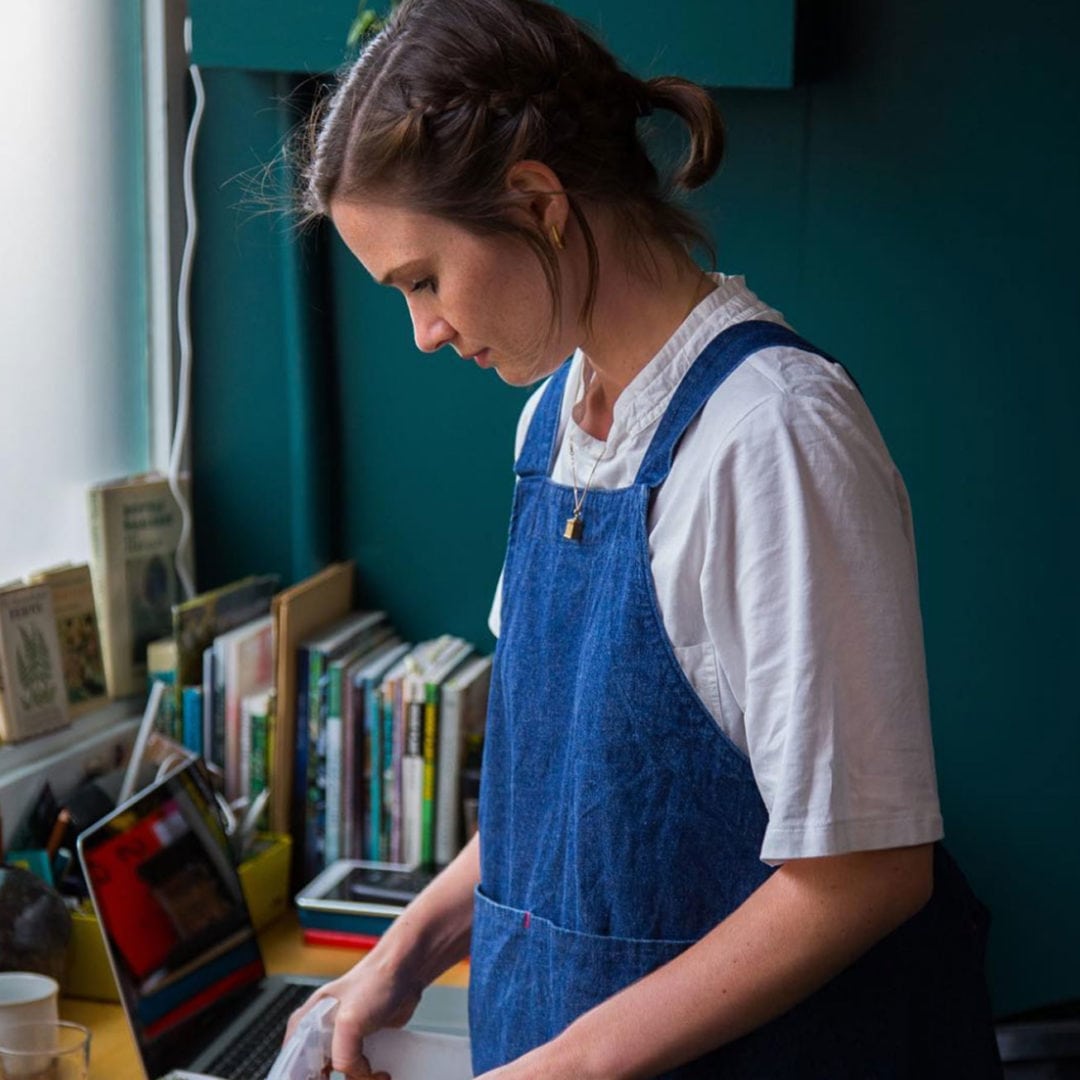
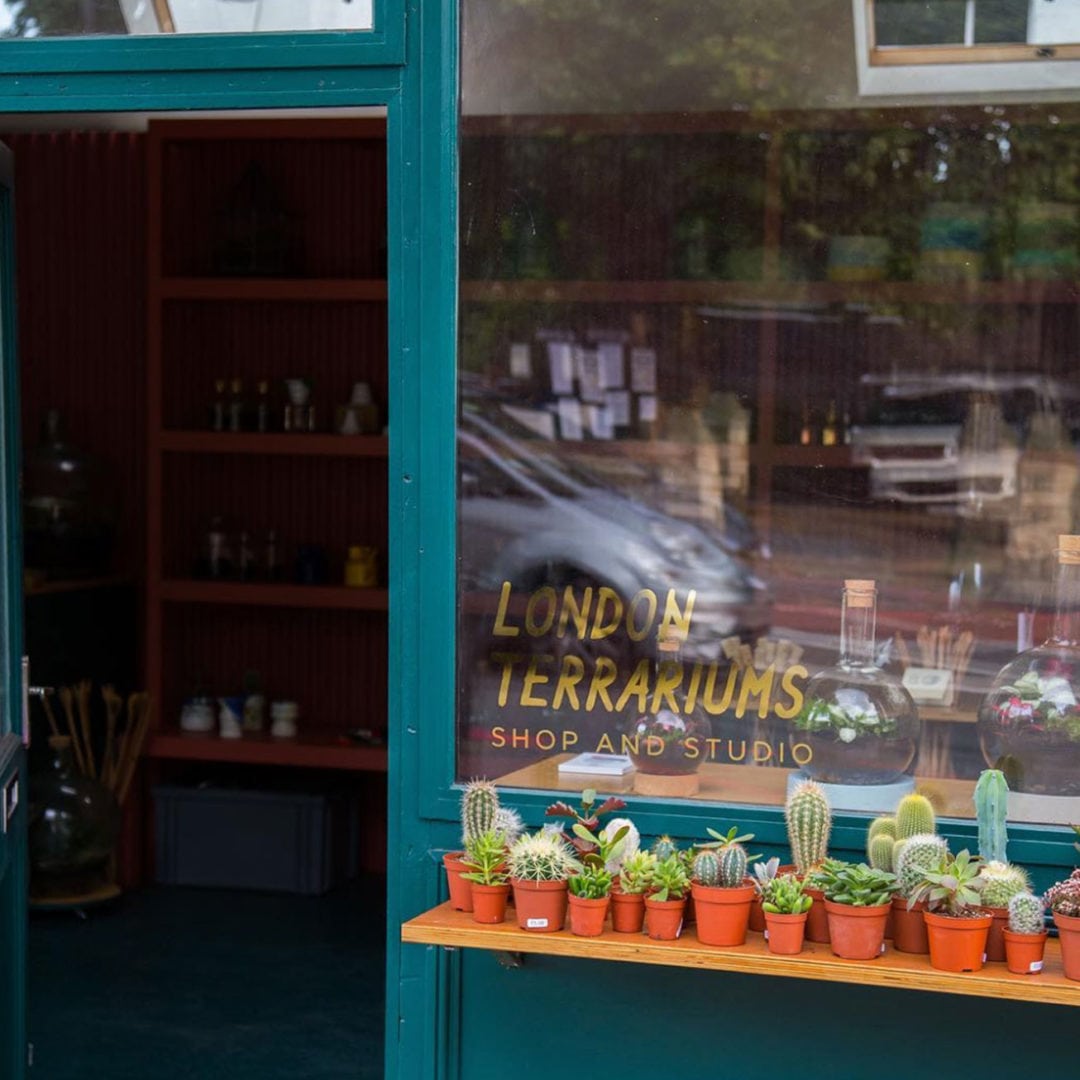
What do you think is the best thing about making terrariums?
For me it is the science behind it that really fascinates me. The way they work and stay alive for so long on their own is just amazing.
I also love holding the workshops. I’ve been doing them for about four years now so it’s become second nature. The best part is always watching everyone leave so so happy with what they’ve made.
Is your home filled with them?
Ahaha actually no! I think I have one terrarium in my home and a mossarium (just moss – my favourite!). I did have loads but when I moved last year I ended up storing them all in the shop and I just never brought them back. I am at the shop more than I am at home these days so I get to see them all enough I think!
What are your plans for London Terrariums in the future?
We have a few big plans in the pipeline. Having the shop is AMAZING and it still inspires me so much so we’d like to maybe open some new shops. Our team is also expanding and I’d definitely like to do a London Terrariums book. Watch this space!
If you’re feeling inspired and ready to get green-fingered keep an eye out for upcoming dates for London Terrariums workshops on our website. You can visit the London Terrariums shop at 106a New Cross Road, London, SE14 5BA and keep up to date with their goings-on by following them on Instagram @londonterrariums.
